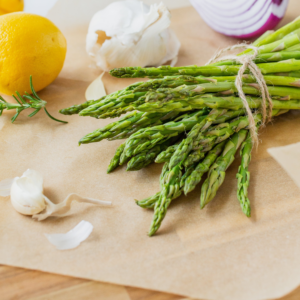They are found everywhere! They are particularly abundant this year and are unfortunately seen as an enemy most of the time. Today we rediscover the dandelion as a super food!
Let’s rediscover this native plant in honor of Native History Month. In this blog we discuss:
- Dandelion’s flavours
- Nutritional facts & health benefits
- How to cook with dandelion
- How to pick the best dandelions
Dandelion's flavours
What can I eat?
In the dandelion everything is eadible and has key health benefits: leaves, flowers and roots.
Leaves
Dandelions leaves are nutty, slightly earthy and have a light bitterness. Their taste is similar to aregula. They are lighter in flavour in early spring and their bitterness intensifies as the summer progresses.
Flowers:
Dandelion flower taste slightly sweet and reminds of the flavour of honey and pansees. They are best picked early in the morning when the flowers have just opened.
Roots:
Dandelion roots have a taste similar to coffee but less acidic. They are often roasted and drank as a warm drink.
Did you know?
- For taste: Harvest the roots in the spring. Their taste is sweeter.
- For health benefits: Harvest the roots in the fall. All the energy of the plant is in the roots and their health benefits are maximized.
Nutritional facts & health benefits
Nutritional facts
Dandelion is part of the chicory and lettuce family. Dandelion has considerable nutritional value. Dandelion has as much vitamin C as as a lime (45 mg per 100 g), more iron than spinach (3.1 mg per 100 g) and almost double vitamin A as carrot (140 mg per 100 g).
Dandelion is rich in:
- Beta-carotene (vitamin A) – promotes health of skin and supports nocturnal vision.
- Vitamin C – supports the immune system, collagen formation, nervous system, iron absorption and improves energy levels.
- iron – supports cognitive functions, red blood cells, immune systems and energy levels.
- potassium – supports muscular functions and helps prevent and reduce muscle cramping after exercise. Supports the nervous system and contributes to balance blood pressure.
Health benefits
Dandelion has many meditative properties and was traditionally in used in medicine. Dandelion is acknowledged for its perks:
- Stimulates appetite with its amorous compounds.
- Facilitates the digestion of fat by augmenting bile.
- Contributes to help balance hormones.
- Has anti-inflamatory properties.
- Facilitates iron absobtion.
How to cook with dandelion
Leaves
Raw
- Salads, garnish for pizza and tacos
- Flavour pairing: eggs, bacon, coutons, potatoes, beets, corn.
Cooked
- Soup, omelets
- The flavor when cooked becomes mellower.
- Flavour paring: platains, eggs, potatoes,
Flowers:
- Salad
- Jam
- Mead/wine
- Garnish
Roots:
- tea

Asparagus gremolata
These aspargus topped with fresh parsley, shallots and lemon zest are an explosion of flavour.
This is ready in 15 minutes and makes a great side.
- Prep Time 10 Minutes
- Cook Time 2-3 Minutes
- Total Time 15 Minutes
- makes 4 servings
Ingredients
- 1 lb asparagus
- 3 tbsp fresh parsley, finely cut
- 1 tbsp shallot or red onion finely diced
- Zest of 1 lemon
- 2 tbsp olive oil
- salt
Instructions
- In a pot of salted boiling water, cook the asparagus until al dente - 2 to 3 minutes. Drain.
- In a bowl, combine the parsley, shallot and lemon zest. Place the asparagus in a serving dish and drizzle with oil.
- Garnish the asparagus with gremolata. season with salt and pepper.
